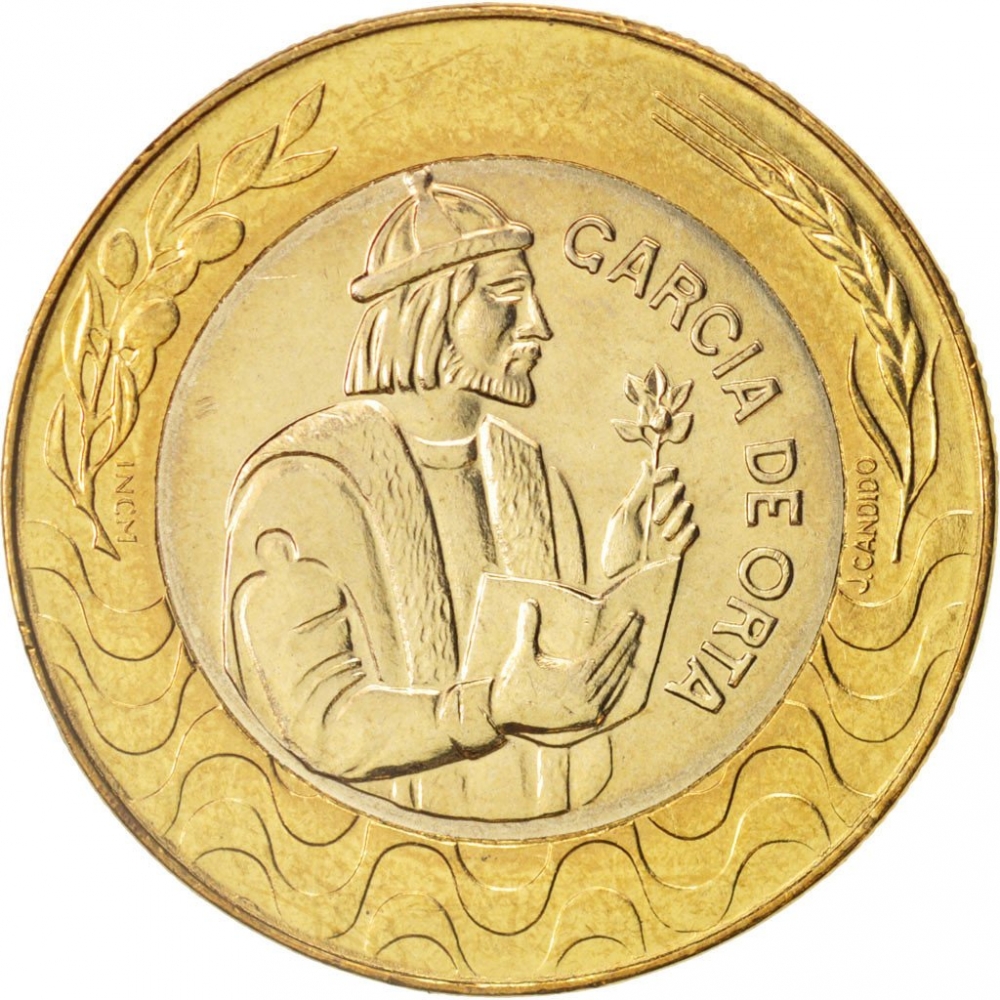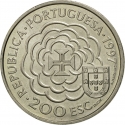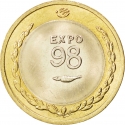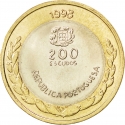You are about to finish your registration. Please check your mailbox (including spam folder). There should be a letter with a confirmation link. Check setting to make sure that your e-mail address is correct.
Send letter againDescription
Engraver: José Cândido
Obverse

|
Depicts 1/2 length figure of Garcia de Orta holding a flower and book facing left. The engraver's name and abbreviation of the Portuguese Mint and Official Printing Office (INCM) below. GARCIA DE ORTA |
|---|---|
Reverse

|
Coat of arms of Portugal above value in a circle, surrounded by the country name and date below. REPUBLICA PORTUGUESA |
| Edge |
Smooth and reeded (7 sections each) |
200 Escudos
KM# 655
Characteristics
| Material | Bi-Metallic |
| Ring | Aluminium Bronze |
| Center | Cupronickel |
| Weight | 9.8 g |
| Diameter | 28 mm |
| Thickness | 2.2 mm |
| Shape |
|
| Alignment | Coin |
| Mint |
Portuguese Mint and Official Printing Office (INCM)
|







